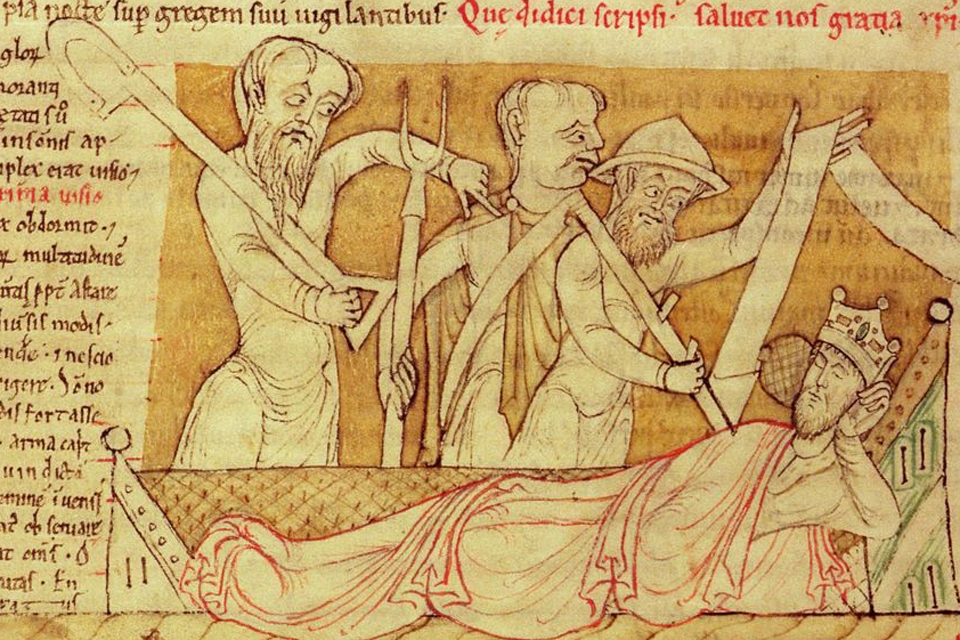Henry I was the fourth son of William the Conqueror. Probably destined for a clerical career, he ended up ruling England and Normandy in the spirit of his father.
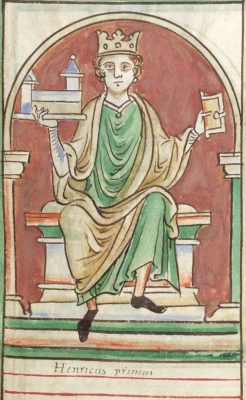
Henry the I (1068 – 1135) was not destined to be king. The youngest of the four sons of William the Conqueror and Mathilda of Flanders it is probable that he was destined for a clerical career. However, in 1086 he was knighted by his father. A year later, William died at Vexin after having divided his lands between his heirs. England was given to William Rufus, while Robert Courthose received Normandy. Henry was given a substantial sum of money plus perhaps the expectation of inheriting his mother’s lands in Buckinghamshire and Gloucestershire.
However, war soon broke out between William Rufus and Robert, and Robert turned to Henry to finance this. Basically he pawned the county of Cotentin for the sum of £3000. Even though the rebellion and a planned invasion of Robert faltered, it paved the way for Henry to establish himself in his new role as count, successfully building up a network of loyal men. Later, they were able to get Henry released from prison at Neuilly-la-Forêt, where he was held by Robert 1088 – 1089 on the instigation of his uncle, Odo of Bayeux. Nevertheless, Henry later took part in dispelling a rebellion at Rouen against Robert. In spite of this, 1091 – 99 saw him at the losing side of the constant warring between his elder brothers. This led him to rebel against both, but in 1091 he had lost all and was finally besieged at Mont Saint-Michel. After having surrendered, he departed through Brittany and into France. The following years saw him busy trying to regain the trust of the king, William Rufus, and that of his followers in Western Normandy, establishing what his latest biographer, Judith Green, called a “court in waiting”. Some time, during this period he began constructing the mighty castle at Domfront.
Seizing the Crown

In 1095 Pope Urban II called the first crusade, which Robert joined. The financing of this expedition built on a loan from Henry. While away, the King of England was to have the Duchy in custody. In August 1100, King William II went hunting in the New Forest and was killed by an arrow-shot. Immediately after, Henry rode to Westminster Abbey, occupied Winchester Castle and the royal treasury. On the 5th of August, he was hastily crowned by the Bishop of London and other dignitaries. In a bid to gain further support, he issued a coronation charter promising less repression of churches and the prevention of royal abuses of baronial rights. A number of other concessions were made as well as pledges to redress specific complaints.
Part of the new regiment was the appointment of a number of clerics to posts, which had been left without incumbents as Anselm, the Archbishop of Canterbury was in exile in France. Further, Henry cemented his reign by marrying Matilda of Scotland, a direct descendant of King Alfred. With her, Henry sired two children, William Adelin who died in the shipwreck of the White ship and Matilda, who later stood to inherit her father. He also sired at least fifteen children with a long list of woman with no particular ancestry to brag about. However, these children were later put to use forging marriage alliances and political connections in England, Normandy and France.
Treaty of Alton
Meanwhile, Robert had hurried back from Jerusalem in order to gather an army and invade England. In 1102, the two brothers and their armies met at Alton and negotiated a peace including a general amnesty for barons, which had stood against either brother during the war. One of the less endearing facts about Henry is the fact that he later disregarded this treaty and went for his brother’s former supporters. 1103 – 06 thus saw him busy trying to gain the upper hand in Normandy, which was rapidly sinking into chaos. Finally, in July 1106 Henry invaded once more. At the battle of Tinchebray, he won a decisive victory routing the troops and taking Duke Robert and a number of his barons as prisoners. Later, Henry received homage from the leading barons of Normandy and the citizens at Rouen. The lesser prisoners were released, but Henry kept Robert and several other nobles imprisoned for life. Robert was kept first at Devizes Castle and later at Cardiff. He died in 1134. The three-year old son of Robert, William Clito, was released together with his sister and brother to the care of a Norman baron. His claims to the dukedom of Normandy later led to several rebellions that continued through the rest of Henry’s reign.
Character and Reputation
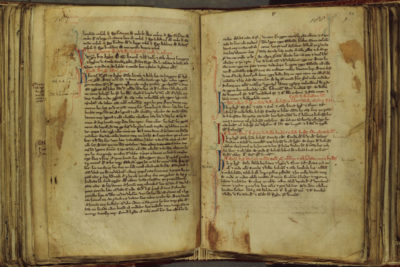
Henry I was without doubt a very smooth operator, who was able to skilfully manipulate people around him – whether barons, courtiers or clerics. Dispensing punishment or rewards as he saw fit, he was later claimed to be a harsh and firm ruler. To what extent, this reputation should be seen as fair depends on what yardstick is wielded: our time or that of the 12th century. Whatever the verdict, there is no doubt that he was responsible for a reorganised judicial system complete with itinerant justices, a reformed coinage and a new and more heavily applied system of taxation. Historians have written much about the administrative developments during his reign; however, opinions on how to evaluate this still differ.
In his dealings with the church he showed a shrewd acumen when working to gain a compromise with Anselm regarding the controversy of the investiture, that is: who was to appoint and thus “invest” bishops– king or archbishop?
Henry successfully forged a compromise whereby the bishops regained the right to invest the clergy, but with Henry retaining the right to have the bishops to do homage for their so-called temporalities (landed properties). One result was that he was able to have his loyal retainers – chancellors – appointed to bishoprics all over England. This created an effective panel of advisors and administrators spread out across the whole of England.
Court
The court of Henry I is one of the first, of which details may be had from not only chronicles but also an early pipe roll, surviving buildings and architecture. Apparently it was a fun place filled with hunting, ceremonies, the flaunting of riches at banquets, gift-giving and lively entertainments. One such, was the first menagerie filled with exotic animals, which Henry kept at Woodstock Palace. However, it was apparently also a court ruled heavy handed by Henry personally. It was a court filled with rumours of impending confiscations, fines and punishments meted out liberally by a king said to be a despot. This was definitely a court defined through “management by terror”. One fascinating source – the constitutio domus regus from about 1136 – details the organisation of the household of Henry I.
Piety and Death
Was Henry a pious king? Again the evidence is not decisive. However, he was in later life an active proponent of the religious reform and the Cluniac order. One of his major achievements was the endowment of Reading Abbey, on which he began construction in 1121. After his death in 1135, his entrails were buried at Rouen, while his embalmed body was sewn into bull’s hide and filled with salt; afterwards it was taken to England and interred at Reading Abbey. After his death, followed the period of anarchy. His eldest son had died in 1120 and his daughter and her sons were not accepted as rightful rulers. Instead Civil war broke out between 1135 and 1153. This ended in 1154 with the crowning of Henry’s grandson, Henry II.
SOURCES:
The four main chronicles to describe the events of Henry’s time were written by
- William of Malmesbury (Historia Novella)
- Orderic Vitalis (Historia Ecclesiastica)
- John of Worcester (Chronicon ex chronicis)
- Henry of Huntingdon (Historia Anglorum).
READ MORE:
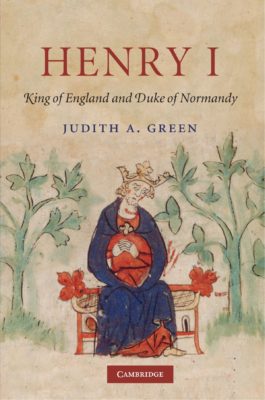 Henry I. King of England and Duke of Normandy
Henry I. King of England and Duke of Normandy
By Judith A. Green, Queen’s University Belfast
Cambridge University Press (2006) 2009
ISBN: 9780521744522
This first comprehensive biography of Henry I, the youngest son of William the Conqueror and an elusive figure for historians, offers a rich and compelling account of his tumultuous life and reign. Judith Green argues that although Henry’s primary concern was defence of his inheritance this did not preclude expansion where circumstances were propitious, notably into Welsh territory. His skilful dealings with the Scots permitted consolidation of Norman rule in the northern counties of England, while in Normandy every sinew was strained to defend frontiers through political alliances and stone castles. Green argues that although Henry’s own outlook was essentially traditional, the legacy of this fascinating and ruthless personality included some fundamentally important developments in governance. She also sheds light on Henry’s court, suggesting that it made an important contribution to the flowering of court culture throughout twelfth-century Europe.
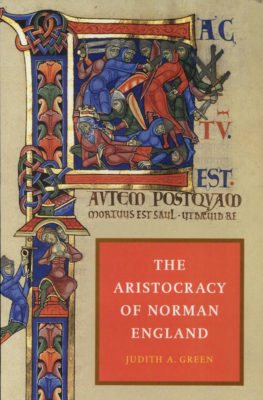 The Aristocracy of Norman England
The Aristocracy of Norman England
by Judith A. Green
Cambridge University Press 1998
ISBN-10: 0521524652
ISBN-13: 978-0521524650
This book provides the first rounded account of the new ruling elite of England in the century after 1066. It deals with the revolution in landholding by which the old English aristocracy was swept aside, and the nature of aristocratic power, as demonstrated by the control of castles and knights, and lordship over men and land. The book stresses the vitality of aristocratic power throughout the period, particularly during the civil war under King Stephen. The part played by kinship and family in building up and extending influence are emphasised, and a separate chapter is devoted to the crucial role played by women in the transmission of land. The role of aristocratic benefactors in the wave of generosity which brought great wealth to the church is also examined and, finally, the extent to which the newcomers identified themselves with the country they had conquered.
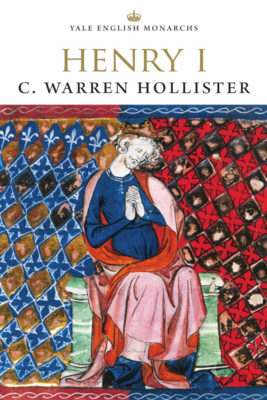 Henry I
Henry I
By C. Warren Hollister
Yale University press 2003
ISBN: 9780300098297
This biography, written by one of the most distinguished medievalists of his generation, paints a new portrait of Henry I, son of William the Conqueror. Not the brutal, greedy, and repressive king that has been supposed, Henry was the ultimate pragmatist and a man of keen intelligence who desired peace, C. Warren Hollister shows. He vividly describes Henry’s life and reign in a time of fundamental change in the Anglo-Norman world.
FEATURED PHOTO:
The Nightmares of Henry I (Oxford, Corpus Christi College, MS 157, pp. 382-83). Source: Wikipedia. According to the chronicler John of Worcester (1095 – 1140) Henry I suffered a number of nightmares in 1130, in which he was tormented by three parties – peasants, knights, and clerics – holding him to account for his failure to uphold justice as he had promised in the Coronation Charter. The detail here shows the first nightmare.
